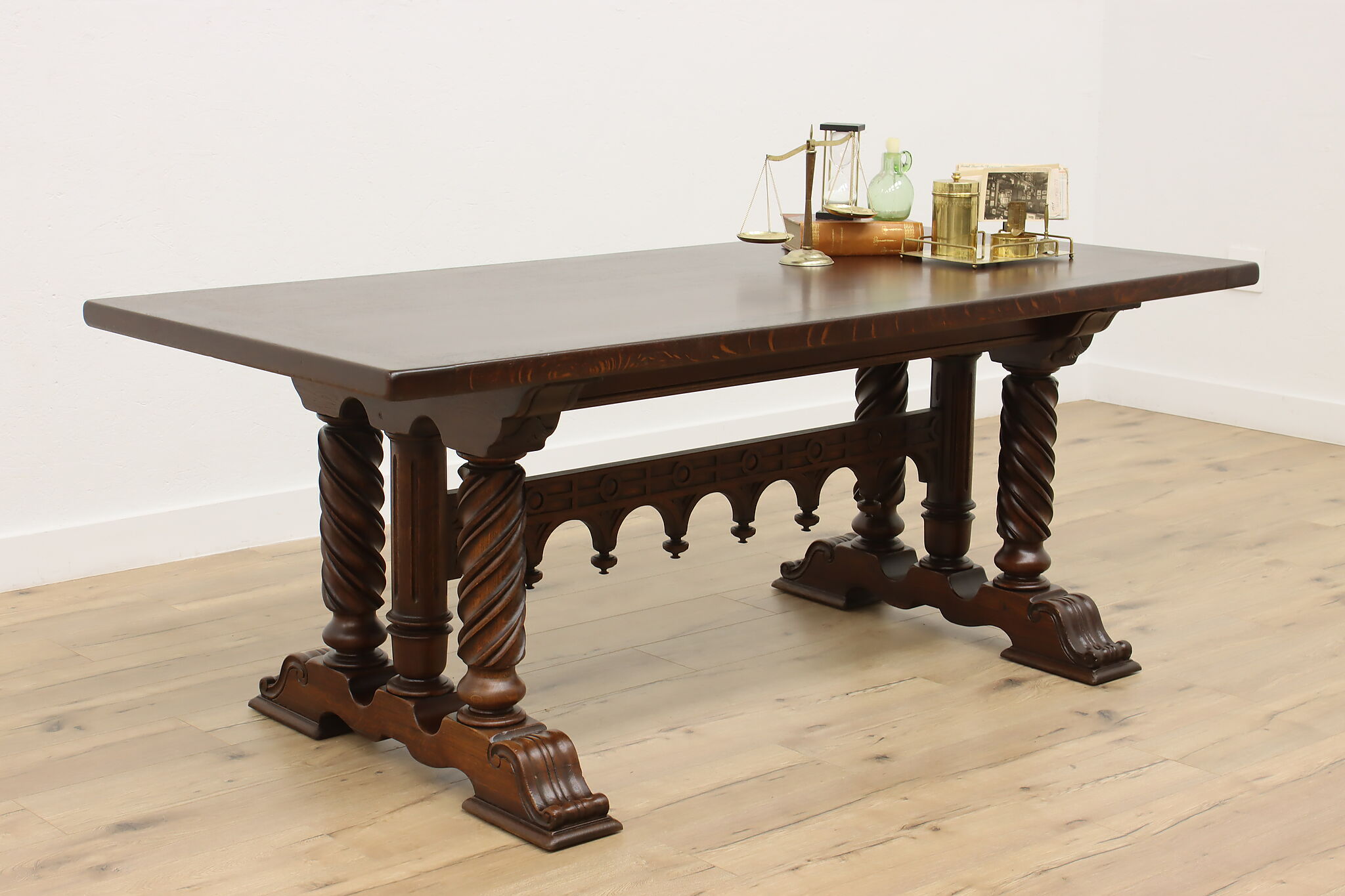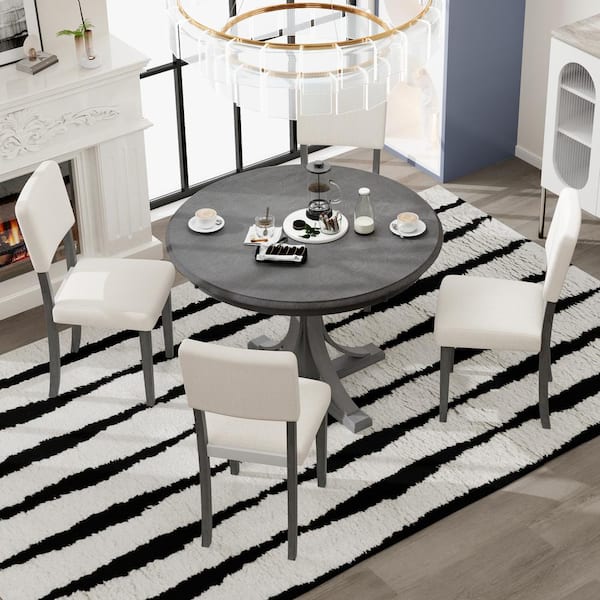From Typical to Modern: Discover the Ideal Eating Room Table Legs for Your Style
While timeless layouts such as cabriole and turned legs evoke a sense of classic sophistication, modern designs like hairpin and geometric choices offer an opportunity for striking visual rate of interest. As you think about these components, the concern stays: just how can you perfectly incorporate these varied leg styles to develop a harmonious dining experience?
Recognizing Table Leg Styles
The variety of dining-room table leg styles can considerably affect both the aesthetics and functionality of the room. Each leg style contributes one-of-a-kind visual elements and practical features, providing to varied style choices and use demands. Comprehending these styles is essential for selecting the best table that straightens with your overall interior style vision.
As an example, conical legs provide a clean, timeless appearance that can boost a space's beauty, while pedestal bases supply stability and maximize legroom, making them ideal for smaller sized areas. Hairpin legs, a trademark of mid-century contemporary design, present an industrial style, enabling an airy, open feel. Similarly, trestle legs stimulate rustic beauty, offering robust assistance and a sense of timelessness.
In addition, the option of products plays a considerable role. Wood legs can bring heat and structure, whereas steel options commonly share a sleek, modern vibe. Eventually, understanding table leg designs is necessary for developing a cohesive dining area that mirrors individual design while making sure practicality and convenience. By attentively considering these aspects, you can enhance both the aesthetic and useful charm of your eating space.
Conventional Table Leg Options
When selecting dining area table legs, conventional choices commonly personify classic beauty and workmanship. These designs mirror an abundant heritage and a dedication to top quality, making them ideal for those that appreciate traditional looks.
One of the most legendary typical leg designs is the cabriole leg, identified by its graceful curved shape. This design typically includes decorative carvings and is most frequently found in Queen Anne and Chippendale furnishings. An additional preferred alternative is the transformed leg, which flaunts a series of smooth, rounded forms that give a classic appearance while keeping security.
Moreover, the straight leg, while basic, uses a sturdy and basic structure that can mix seamlessly with a range of tabletop styles. For those attracted to ornate describing, claw-and-ball feet legs evoke a sense of splendour and can work as a stunning prime focus in any kind of dining space.
Lastly, stand bases, although not strictly legs, provide a different traditional choice that enables ample legroom and can be beautifully sculpted. Each of these typical leg designs adds to the total atmosphere of a dining area, weding function with visual charm.

Modern Table Leg Layouts
Modern table leg styles supply a diverse variety of styles that stress ingenious products and clean lines. These styles typically focus on capability while serving as striking centerpieces within an eating area. Minimal aesthetic appeals prevail, with legs crafted from materials such as steel, glass, and crafted additional info wood, which add to a airy and contemporary feeling.
One preferred style is the barrette leg, characterized by its slender, conical framework that provides security without frustrating the table top (dining room table legs). This style is commonly found in mid-century modern furnishings and can easily complement different eating table shapes. One more trend is making use of geometric forms, where legs might take on unbalanced or angular kinds, adding visual passion and a touch of virtuosity

Mixing Designs for Special Rooms
Usually, homeowners look for to produce distinct eating rooms that reflect their individual design by blending various layout aspects. This method permits the incorporation read this post here of varied appearances, causing an unified yet unique environment. For circumstances, combining a rustic wooden table with streamlined, contemporary steel legs can develop an eye-catching comparison that raises the area's total charm.
Furthermore, integrating vintage table legs with modern tabletops can stimulate a sense of background while maintaining a contemporary sensibility. Such combinations not only display private preference but also motivate creative thinking, allowing house owners to curate a space that feels both personal and inviting.
Color plays a critical duty in this blending procedure; choosing table legs that match or comparison with the existing shade scheme can enhance visual interest. For instance, whitewashed legs can soften the boldness of a dark table surface area, creating a well balanced visual.
Tips for Picking the Right Legs
Selecting the right table legs is vital for achieving both capability and visual appeal in your eating area. Begin by considering the overall style of your room. Typical settings take advantage of legs that include intricate carvings or turned designs, while contemporary areas might ask for streamlined, minimal styles.
Following, analyze the height and security of the see this legs. dining room table legs. Basic table range between 28 to 30 inches in elevation, so guarantee the legs match this measurement for comfort. Furthermore, robust products, such as wood or steel, can boost security and durability
Review the leg form as well-- alternatives consist of right, tapered, or stand designs. Straight legs use a traditional appearance, while tapered legs can include a touch of beauty. Pedestal bases give ample legroom and are excellent for smaller sized areas.
Verdict
In summary, selecting the perfect dining-room table legs calls for cautious consideration of both contemporary and typical designs. Standard choices such as cabriole and transformed legs offer classic style, while contemporary designs like barrette and geometric forms offer a modern touch. By integrating leg style, elevation, and material with the total design, a natural and welcoming atmosphere can be achieved. Eventually, the chosen table legs should mirror the wanted aesthetic, enhancing the dining experience within the room.
The variety of dining area table leg styles can dramatically influence both the aesthetics and functionality of the area. Eventually, understanding table leg styles is necessary for developing a cohesive dining area that shows personal design while guaranteeing practicality and comfort.One of the most famous traditional leg styles is the cabriole leg, characterized by its graceful bent shape. Straight legs use a timeless look, while tapered legs can include a touch of sophistication.In recap, picking the ideal eating space table legs calls for careful factor to consider of both modern-day and conventional designs.